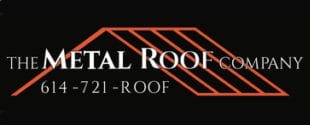There are two basic metal roofing types used in roofing: Standing Seam and Rib Metal. Within these types of metal roofs are a few different sub-types that serve specific functions for metal roofing needs. In addition to the type or subtype of metal roof you choose, there are different gauges, or thicknesses, to the metal. The type of metal you choose and the gauge of the metal will be the primary determining factors in the cost. Whether you choose to get a standard color or want a custom or specialized patina [such as the stunning tarnished copper patina from Petersen Pac-Clad] will also play a role.
Generally speaking, ‘Standing Seam’ is your thicker, highest-quality metal. ‘Mechanical Seamed’ is one type of standing seam metal roof. It’s the top choice for residential and commercial metal roofing projects when the pitch of the roof is low. This type of standing seam is your absolute watertight solution for a metal roof. Where you would normally only have the choice of a rubber or TPO product on a low pitch, we can install a mechanical seam product to your low slope, keeping it watertight and with all the aesthetic and value of a metal roof. How the mechanical seamed metal panels differ from a traditional standing seam is that the seams are mechanically crimped to allow zero penetration of elements. The panels also create structural stability within the roof.
‘Snap-lock’ metal roofing is another type of Standing Seam and comes in a variety of different clips and integrated hems depending on panel profile. The term ‘snap-lock’ means there’s a female and male tab on each panel which ‘snap’ and then ‘lock’ into one another. Both the mechanical seamed and snap-lock types have concealed fastener’s which means no exposed screws.
Rib metal is going to be your best economical choice for a metal roof. For a residential rib metal project, you’ll typically use 29 gauge. For commercial applications, 26 gauge is your best option because it offers more structural stability due to its thickness.

